
Silica-scaled chrysophytes in Bulgaria / Kristiansen, J PDF
Preview Silica-scaled chrysophytes in Bulgaria / Kristiansen, J
Cryptogamie, Algol. 1998, 19 (1-2): 19-28 19 SILICA-SCALED CHRYSOPHYTES IN BULGARIA Jørgen KRISTIANSEN! and Maya STOYNEVA? ! Botanical Institute, Department of Phycology, University of Copenhagen, Oster Farimagsgade 2 D, DK-1353 Copenhagen K, Denmark ? Department of Botany, Sofia University "St Kliment Ohridski", Bld. Dr Zankov 8, 1421 Sofia, Bulgaria ABSTRACT (cid:8212) During an examination by transmission electron microscopy of samples from 21 freshwater localities (lakes, swamps, ponds and streams) in Bulgaria, a total of 13 species of silica-scaled chrysophytes (Chrysophyceae and Synurophyceae) were identified. Only three of these species had previously been recorded from Bulgaria, and only one of these was studied by electron microscopy. Eight of the species are cosmopolitan in their distribution, three are restricted to northern temperate regions, and two have a bipolar temperate distribution. Almost all the species have been reported from adjacent countries. RÉSUMÉ (cid:8212) Treize espèces de chrysophytes à écailles silicieuses (Chrysophyceae et Synurophyceae) ont été identifiées par examen, en microscopie électronique à transmission, d'échantillons de 21 localités d'eau douce (lacs, étangs, tourbiéres et rivières), en Bulgarie. Trois de ces espèces étaient déja signalées en Bulgarie, mais une seule avait fait l'objet d(cid:8217)une étude en microscopie électronique. Huit des espèces sont cosmopolites, les cinq autres sont limitées aux régions tempérées, dont deux avec une distribution tempérée bipolaire. Presque toutes ces espèces sont connues dans des pays limitrophes. KEY-WORDS: Bulgaria, Chrysophyceae, distribution, freshwater algae, Heterokonta, new record, Stramenopiles, Synurophyceae, transmission electron microscopy. INTRODUCTION The flora of silica-scaled chrysophytes (belonging to the classes Chrysophyceae and Synurophyceae) in Bulgaria is very little known (Kristiansen et al., in press). In contrast, there are several more in-depth investigations from the adjacent countries of Romania (e.g. the works by Péterfi, 1966; Peterfi & Momeu, 1976; Momeu & Péterfi, 1987) and Greece (Kristiansen, 1980, 1983), and also from Hungary (Kristiansen & Padisák, 1992; Kiss & Kristiansen, 1994). In Bulgaria, some early finds of species of Mallomonas and Synura have been reported by Valkanov (1928), with light microscopy, but such observations are no longer considered reliable. These and other LM documented finds of chrysophytes have been listed and evaluated in the survey by Kristiansen et al., in press. Electron microscopy of the Source : MNHN, Paris 20 J. KRISTIANSEN and M. STOYNEVA silica scales is indispensable for species identification within this group of organisms (see e.g. Kristiansen, 1996), but the only EM study as yet on Bulgarian material is the description of a bloom of Mallomonas acaroides Perty from a pond in the Rila Mountains (Kristiansen, 1971). MATERIALS AND METHODS The samples were collected from the water surface in 1 1 glass or plastic bottles and fixed with 2-4 ? formaldehyde. Electron microscopy of the silica scales was done in the Department of Phycology, University of Copenhagen. Droplets of sedimented mate- rial from the samples were dried onto formvar/carbon coated grids, washed in distilled water and after drying the grids were examined in a JEOL JEM 100SX electron micros- cope. The 33 samples were taken from 21 localities (Fig. 1) that included some lowland temperate lakes (Loc. 1, 2), lowland as well as mountain swamps (Loc. 3, 4, 5, 6, 7), mountain stream and peatbogs (Loc. 8,9, 10), high mountain lakes (Loc. 11, 12, 13, 14, 15, 16, 17, 18, 19, 20), and a high mountain pool (Loc. 21). The localities are located at about 42-44? N.Lat. Localities are listed in Table 1. RIVER DANUBE ROMANIA z sota St& 1 ae BNP e OM AMERICA BLACKS EA "s 10(cid:8212)17 \ MACEDONIA(cid:8220)x 18(cid:8212)21 ÿ uae i ME a GREECE Fig. 1. Map of Bulgaria showing the location of the investigated localities. Source : MNHN, Paris SILICA-SCALED CHRYSOPHYTES IN BULGARIA 21 Table |. List of sampled localities. ee A Locality 1. Lake (cid:8220)Beloslaysko ezero(cid:8221) (cid:8212) located west to the town of Varna at the Black Sea Coast, area of 400 ha, maximum depth 3.5 m, average depth 2.3 m, volume 9 105 m?, previously freshwater, recently changed to brackish water (salinity > 5 %v), surrounded by reeds. Sampled on 23.05.92 by Dr Delov from Sofia University (SU). Locality 2. Srebarna Lake (cid:8212) located at the right bank of the Danube River, total area of 2.4 km? and open water area of 0.6 km?, maximum depth at the sampling time 1.2 m, volume 3.7 10° m?, pH varying between 7 and 8.5, freshwater, highly cutrophic holo-polymictic temperate lake surrounded by reeds. Sampled on 20.05.92, 6.06.92, 22.04.93, 6.07.93, 10.12.94 by Dr M. Stoyneva (SU), N. Michov, Dr M. Marinov, and Dr T. Michev from Bulgarian Academy of Sciences (BASc). Locality 3. Swamp (cid:8220)Blato Tarlitza" (cid:8212) located at the right bank of the Danube River and adjacent to the Srebarna Lake, maximum depth at the sampling time 0.5 m, freshwater, highly eutrophic holo-polymictic temperate swamp. Sampled on 27.04.94 by Dr M. Stoyneva, N. Michoy and Dr T. Michev. Locality 4. Swamp (A) in the South Park of Sofia town (cid:8212) located in the central part of Sofia (about 560 m above sea level), maximum depth at the sampling time 0.8 m, freshwater holo-polymictic temperate swamp overgrown by hydrophytes. Sampled on 15.04.88 by Dr M. Stoyneva. Locality 5. Swamp (B) in the South Park of Sofia town (cid:8212) located in the central part of Sofia (about 560m above sea level), maximum depth at the sampling time0 .5 m, freshwater holo-polymictic temperate swamp surrounded by rushes. Sampled on 21.06.89 by Dr M. Stoyneva. Locality 6. Swamp (cid:8220)Dolno Bojansko blato(cid:8221) (cid:8212) located in the south-western part of Sofia town at the foot-hills of Vitosha Mountain (about 610 m above sea level), maximum depth at the sampling time 0.4 m, freshwater holo-polymictic swamp with small open water areas among the rush-bed. Sampled 16.07.94 by Dr M. Stoyneva. Locality 7. Swamp "Gorno Bojansko blato" (cid:8212) located in the south-western part of Sofia town at the foot-hills of Vitosha Mountain (about 620 m above sea level), maximum depth at the sampling time 1.2 m, freshwater holo-polymictic swamp with a rush-bed at its northern and Sphagnum at its southern part. Sampled on 16.07.94 by Dr M. Stoyneva. Locality 8. Stream (cid:8220)Suhodolska reka(cid:8221) located in the south-western direction towards the town of Sofia, at about 580 m above sea level. Sampled on 12.06.92 by Dr M. Stoyneva, Dr St. Kovachev (SU), Dr T. Michev and Dr V. Velev (BASc). Locality 9, Peat-bog at Vitosha Mountain (cid:8212) a small bog overgrown by Sphagnum, located at about 1000 m above sea level. Sampled on 18.07.94 by Dr M. Stoyneva. Locality 10. Peat-bog in the Rila Mountains (cid:8212) a small bog located near the top of Maljovitza at about 2350 m above sea level, Sampled on 27.0794 by Dr M. Stoyneva and Dr T. Michey. Locality 11. Lake *Dolno Kamilsko ezero" (cid:8212) located in the Rila Mountains at about 2300 m above sea level. Sampled on 28.07.94 by Dr M. Stoyneva and Dr T. Michev. Locality 12. Lake (cid:8220)Gorno Kamilsko ezero(cid:8221) (cid:8212) located in the Rila Mountains at about 2350 m above sea level by Dr M. Stoyneva and Dr T. Michev. Locality 13. Lake "Strashnoto ezero" (cid:8212) located in the Rila Mountains at 2408 m above sea level, water surface area 0.14 ha, maximum depth 2.0 m, pH (cid:8212) 7.0. Sampled on 28.07.94 by Dr M. Stoyneva and Dr T. Michev. Locality 14. Lake (cid:8220)Suhoto ezero(cid:8221) (cid:8212) located in the eastern part of the Rila Mountains at about 2475 m above sea level, water surface area 0.9 ha, Sampled on 19.10.94 by Dr Sp. Tonkoy (SU) and Dr D. Dimitrov (SU). Locality 15. Lake 1 from the group (cid:8220)Urdini ezera(cid:8221) (cid:8212) located in the western part of the Rila Mountains at 2375 m above sea level, maximum depth 4.7 m, average depth 1.9 m, water surface area 0.9 ha, pH = 6.6. Sampled on 18.10.69 by Dr St. Draganov (SU). Locality 16. Lake 2 from the group (cid:8220)Urdini ezera(cid:8221) (cid:8212) located in the western part of the Rila Mountains at 2278 m above sea level, maximum depth 6.6 m, average depth 3.6 m, water surface area 2.5 ha, volume 8.95 10*m ?, pH (cid:8212) 6.8. Sampled on 18.10.69 by Dr St Draganov. Source :M NHN, Paris 22 J. KRISTIANSEN and M. STOYNEVA Locality 17. Lake 3 from the group (cid:8220)Urdini ezera(cid:8221) (cid:8212) located in the north-western part of the Rila Mountains at 2339 m above sea level, maximum depth 4.7 m, average depth 2,5 m, water surface area 2,3 ha, volume 5,95 10* m?, pH (cid:8212) 7.7. Sampled on 18.10.69 by Dr St. Draganov. Locality 18. Lake (cid:8220)Okoto na Todora" (cid:8212) located in the northern part of the Pirin Mountains at 2062 m above sea level, water surface area 0.3 ha, maximum depth 5.5 m, average depth 2.5 m, volume 6.6 10? m?. Sampled on 26.10.89 by Dr M. Stoyneva and Dr D. Lazarov. Locality 19. Lake (cid:8220)Ribno ezero(cid:8221) (cid:8212) located in the northern part of the Pirin Mountains at 2190 m above sea level, water surface area 6 ha, maximum depth 12 m. Sampled on 30.06.92 by Dr V. Koicheva. Locality 20. Lake (cid:8220)Banderishko ezero(cid:8221) (cid:8212) located in the northern part of the Pirin Mountains at 2312 m above sea level, water surface area 0.4 ha, average depth about 1 m. Sampled on 26.10.89 by Dr M. Stoyneva and Dr D. Lazarov. Locality 21. A pool near the tourist house (cid:8220)Vichren(cid:8221) (cid:8212) in the northern part of the Pirin Mountains at about 2000 m above sea level, with mass development of Chaetophora elegans (Roth) C. Ag. Sampled on 26.10.89 by Dr M. Stoyneva and Dr D, Lazarov. RESULTS AND DISCUSSION A total of 13 species were found, including four belonging to the Chrysophyceae and nine to the Synurophyceae. They have been listed, together with the localities, in Table 2, and electron micrographs of their silica structures are given as Figs 2-19. Some of the scales appeared rather corroded, affecting the quality of several of the pictures. In Fig. 12, e.g., the secondary layer of the scale has almost disappeared, but it can be better seen in the original micrographs. Table 2. Chrysophyte taxa and their occurrence in the investigated localities Spiniferomonas abei Takahashi: Loc. 12 Spiniferomonas trioralis Takahashi: Loc. 2, 19 Paraphysomonas takahashii Cronberg & Kristiansen: Loc. 2 Paraphysomonas vestita (Stokes) De Saedeleer: Loc. 2 (four samples) Mallomonas matvienkoae (Matvienko) Asmund & Kristiansen var. matvienkoae: Loc. 12 Mallomonas papillosa Harris & Bradley var. papillosa: Loc. 15, 20, 21 Mallomonas caudata Ivanov emend. Krieger: Loc. 5, 8, 19 Mallomonas actinoloma Takahashi var. maramuresensis Péterfi & Momeu: Loc. 2, 12 Mallomonas alpina Ruttner in Pascher: Loc. 19 Mallomonas tonsurata Teiling: Loc. 5, 8, 19 Mallomonas acaroides Perty emend. Ivanov vat. acaroides: Loc. 5, 8, 15, 17, 18, 19, 20, 21 Mallomonas pumilio Harris & Bradley var. munda Asmund: Loc. 20. Synura petersenii Korshikov: Loc. 5, 8, 19, 22 Source : MNHN, Paris SILICA-SCALED CHRYSOPHYTES IN BULGARIA 23 The Chrysophyceae were represented by the genera Paraphysomonas and Spini- feromonas. Spiniferomonas trioralis (Fig. 3) is a widely recorded cosmopolitan species. It is recorded from neighbouring Greece (Kristiansen, 1980), and also from Hungary (Kris- tiansen & Padisak, 1992). Spiniferomonas abei (Fig. 2) has scattered records from tempe- rate and arctic regions in the northern and southern hemisphere. In Europe it has hitherto been recorded from Denmark (Kristiansen, 1978) and Norway (Skogstad, 1986). The find in Bulgaria thus represents its southernmost reported European occurrence. Paraphyso- mons vestita (Fig. 5) is one of the world's most widely distributed chrysophytes, found in all parts of the world. It has previously both been recorded from Greece (Kristiansen, 1980) and Hungary (Hajdu, 1975; Kristiansen & Padisák, 1992). Paraphysomonas taka- hashii (Fig. 4) has a much more scattered occurrence. Since its description from Sweden (Cronberg & Kristiansen, 1980) it has been found in several localities in northern tempe- rate regions, in Asia, America and Europe. The European finds further include Iceland (Kristiansen, 1995), Denmark (Thomsen et al., 1981), and Finland (Hällfors & Hällfors, 1988). Thus, it has never been recorded so far south as in Bulgaria before. The Synurophyceae were represented by the two genera Mallomonas and Synura, with eight and one species, respectively. Mallomonas matvienkoae f. matvienkoae (Fig. 6) is a cosmopolitan taxon, occurring mainly in temperate and subtropical regions. It has also been recorded from Romania (Asmund & Kristiansen, 1986; Péterfi & Momeu, 1977), whereas another variety, var. grandis Dürrschmidt & Cronberg, has its main occurrence in the tropics (Cronberg, 1989; Wujek & Saha, 1996). Mallomonas papillosa var. papillosa (Fig. 10) is a widely distributed cosmopolitan taxon, also found in many European countries. It was recorded from Romania by Péterfi & Momeu (1976). Mallo- monas caudata (Figs 8-9) has previously been recorded from the Bulgarian Danube section by LM (Szemes, 1967) and it is one of the few species which can be reliably identified in this way. It is an almost cosmopolitan species, and it has been recorded from the adjacent countries of Romania and Greece (Asmund & Kristiansen, 1986). Mallomonas actinoloma var. maramuresensis (Fig. 7) was described by Péterfi & Momeu (1976) from the Maramu- res Mountains in Romania. Later it has been shown to have a wide but scattered northern distribution, in Northern Europe and Japan (see Asmund & Kristiansen, 1986), but it has not been recorded from adjacent countries other than Romania. Mallomonas alpina (Fig.11) is a common cosmopolitan species, It has also been found in in the adjacent countries Romania and Greece, and also in Hungary (Asmund & Kristiansen, 1986; Kristiansen & Padisdk, 1992). Mallomonas tonsurata (Figs 12-13) is one of the world's most widely distributed species. It has also been found in the neighbouring Greece and in Hungary (Kristiansen, 1980; Kristiansen & Padisak, 1992), but has apparently never been recorded from Romania. The species has previously been identified by LM on dried material collected in Bulgaria by Valchanova (1995) and by Stoyneva & Valchanova (1997). Mallomonas acaroides (Figs 14-17) was found in several localities. Specimens found in localities 5, 18 and 19 had scales with a very weakly developed ornamentation, whereas the scales in the other samples had a well developed reticulum on the shield. Most often both serrated bristles and helmet bristles are present, but in some localities only serrated bristles were found, in other localities only helmet bristles (Loc. 15, 16, 18, 21). The previous find of a population of this species in Bulgaria examined by EM showed all bristles developed as helmet bristles (Kristiansen, 1971). Fott (1962) distinguished four varieties of M. acaroides based on bristle characters, but the three of them, excluding the very deviating var.inermis Fott, should be united as M. acaroides var. acaroides, with a variable ratio between helmet bristles and serrated bristles (see Asmund & Kristiansen, 1986). It is not known whether bristle morphology in this species depends on temperature, Source : MNHN, Paris 24 J. KRISTIANSEN and M. STOYNEVA such as is the case in M. crassisquama (Asmund) Fott (see Siver & Skogstad, 1988). M. acaroides has previously been recorded from Bulgaria by LM by Valkanov (1928); the identification was later confirmed by EM (Kristiansen, 1971). Further LM identifications include records by Valkanov (1934), Vodenicharov (1962), Szemes (1967), Valchanova (1995) and Stoyneva & Valchanova (1997). It is widely distributed in the northern temperate and subarctic regions, and it has also been recorded from Romania and Hungary (Asmund & Kristiansen, 1986; Kiss & Kristiansen, 1994). Mallomonas pumilio var. munda (Fig. 18, only this single scale found) is distributed in temperate regions. It is widely recorded from Europe, and it has also been found in Canada and in temperate parts of S. America. In adjacent countries it has also been found in Romania (Momeu & Péterfi, 1987). Only one species of the genus Symura has been found, viz. Synura petersenii (Fig.19). It has also been found in the adjacent countries: Romania (Péterfi, 1966), Greece m(Korsits tiwaindseelny, di1s98t0r)i,b utHeud ngcahrryys o(pKhryitset.i anAsneont h&e r Pasdpiescaike,s h1a9s9 2)b eaennd rietc iosr doende oasf tfhree qwuoernltd (cid:8217)isn Bulgaria, viz. Synura uvella Ehr. (Valkanov, 1926, 1928; Vodenicharov, 1962, 1967; Nai- denov, 1964; Naidenov & Saiz, 1977; Saiz, 1978; Stoyneva, 1991; Valchanova, 1995), but without examination of the silica-scale structure. "'Synura uvella" was previously used as a common name for any species of the genus, and thus it cannot be seen which species is actually referred to in these works (Kristiansen er al., in press). As regards the occurrence of the species in the examined localities, the following remarks can be made. There were no species reported from the acid peat bogs (localities 91,21-0)2.1 ):STphien ifefroolmloonwaisng absepie,c ieMsa llwoemroen asc onmfiantevdi enktooa e,t he M. mopuapnitlaliosna , lMa.ke s alp(ilnoac,a litaineds oMl.i gpoutmriolpihoi c vacr.o ndmiutnidoan.s. TPhiasr aipsh iyns oamcoconradsa ntcaek ahwaisthhi it heainrd geP.n evreas]t itpar ewfeerree nocnel yf ofro usnodm eiwnh atthe highly eutrophic lake loc.2, as is often seen in this heterotrophic genus. The remaining species were found in av ariety of locality types, reflecting that most of them, especially Synura petersenii, have a wide environmental range. It is seen from the above that altogether 13 species were found during this ienxvaemsitniagtaitioonns,, oannldy townoe otohfe r whfircohm LhaMs obbeseenr vrateicoonrsd edo nlpyr. evMioorues lys pefcrioems cBouullgda rciear tabinyl yE bMe f(oKurnids,t ianasnedn ient daele.d, ins epvreersasl) . oItnh etrh e sapdejcaiceesn t hacvoeu ntbreieens mraencoyr dmeodr ef rsopme ciLesM of osbisleicrav astciaolnesd chrysophytes have been found, e.g. in Greece 38 species of silica-scaled chrysophytes have been identified by EM (Kristiansen, 1980, 1983). Most of the species are widely distributed and more or less cosmopolitan, except Mtscaaakltaltheoarmsehodin ia oscw chauicrcarhre onicadreeess ., r eMsStaprliilcnotiemfdeo rntoaoms o tnhaaecs t Nionarboetliho meara nn dva rH.e Mm.mi asrppauhmmeuirrleei,so e ntvshaier s. twamonu dn ldaPatta erra hpahvhaeyv isnobgmi oponvleaarsyr temperate occurrences (see Kristiansen & Vigna, 1996). ACKNOWLEDGEMENTS (cid:8212)T he authors wish to thank all colleagues who helped in cCohlrliescttiianngs ent,he Dseapmtp.l eosf Pohr yckoilnodglyy, pCroopveindehda getnhe,i r hamavtee raisasli.s teLdi sibne tehl ecHtraounk rmoigchr osacnodp y Leanned carried out the photographic work. Source : MNHN, Paris SILICA-SCALED CHRYSOPHYTES IN BULGARIA 25 REFERENCES ASMUND B. & KRISTIANSEN J., 1986 (cid:8212) The genus Mallomonas. Opera Botanica 85: 1-128. CRONBERG G., 1989 (cid:8212) Scaled chrysophytes from the tropics. [/n: KRISTIANSEN 1, CRONBERG G, & GEISSLER U. (cds), Chrysophytes. Developments and perspectives] Beihefte zur Nova Hedwigia 95: 191-232. CRONBERG G. & KRISTIANSEN J., 1980 (cid:8212) Synuraceae and other Chrysophyceae from central Smáland, Sweden. Boraniska Notiser 133: 595-618. FOTT B., 1962 (cid:8212) Taxonomy of Mallomonas based on electron microscopy of scales. Preslia 29: 69-84. HALLFORS G. & HALLFORS S., 1988 (cid:8212) Records of chrysophytes with siliceous scales (Mallo- monadaceae and Paraphysomonadaceae) from Finnish inland waters. [I: JONES R.L. & ILMAVIRTA V. (eds), Flagellatesin freshwater ecosystems. Developments in Hydrobiology 45] Hydrobiologia 161: 1-29. HAIDU J., 1975 (cid:8212) A Paraphysomonas vestita (Stokes) de Saedeleer elöfordulása hazánkban [Das Vorkommen von Paraphysomonay vestita (Stokes) de Saedeleer in Ungary]. Botanikai Közlemények 62: 9-12. (In Hungarian, German summary) KISS K.T. & KRISTIANSEN J., 1994 (cid:8212) Silica-scaled chrysophytes (Synurophyceae) from some rivers and shallow lakes in Hungary. [/n: DESCY J.-P, REYNOLDS C.S. & PADISAK J. (eds), Phytoplankton in turbid environments: Rivers and shallow lakes. Developments in Hydrobiology 100) Hydrobiologia 289: 157-162. KRISTIAN2S77E-N28 1.J. , 1971 (cid:8212) A Mallomonas bloom in a Bulgarian mountain lake, Nova Hedwigia 21: KRISTIANSEN J., 1978 (cid:8212) Studies on the Chrysophyceae of Bornholm. Botanisk Tidsskrift 73: 71-85. KRISTIANSEN J., 1980 (cid:8212) Chrysophyceae from some Greek lakes. Nova Hedwigia 33: 167-194. KRISTIANSEN J., 1983 (cid:8212) On the species of Paraphysomonas (Chrysophyceae) in some Greek lakes. KRISTIANNSoEvaN HeJ.d,w i19g9i5a (cid:8212) 38S:i l6i5c-a7-2s.c aled chrysophytes from Lake Thingvallavatn, Iceland. Algolo- gical Studies 79: 67-76. KRISTIANSEN J., 1996 (cid:8212) Silica structures in the taxonomy and identification of scaled chryso- phytes. Beihefte zur Nova Hedwigia 112: 355-365. KRISTIANSEN J. & PADISAK J., 1992 (cid:8212) Silica-scaled chrysophytes (Chrysophyceae and Synuro- phyceae) from the Kis-Balaton Reservoir, Hungary. Annales historico-naturales Musei Nationalis Hungarici 84: 7-16. KRISTIANSEN J., STOYNEVA M. & VALCHANOVA M. (in press) (cid:8212) Bulgarian chrysophyte studies with an appendix of recorded species. Annales Universitatis Sofia 90. KRISTIANSEN J. & VIGNA M.S., 1996 (cid:8212) Bipolarity in the distribution of silica-scaled chryso- phytes. [/n: KRISTIANSEN J. (ed.), Biogeography of Freshwater Algae. Developments in Hydrobiology 118] Hydrobiologia 336: 121-126. MOMEU L. & PÉTERFI L.S., 1987 (cid:8212) Seven Mallomonas species investigated in the transmission electron microscope. Studii Universitatis Babes-Bolvai, Cluj-Napoca, 32: 19-25. NAIDENOV V., 1964 (cid:8212)P lankton and dynamics of leading forms in the reservoir (cid:8220)Batak(cid:8221). Izvestija na Zoologitsjeskija Institut 15: 151-183. (In Bulgarian, German summary). NAIDENOY V. & SAIZ D., 1977 (cid:8212) Plankton of the reservoir (cid:8220)Dospat(cid:8221). Hidrobiologija (Sofia) 5: 24-37. (In Bulgarian). PÉTERFI L.S., 1966(cid:8212) Studies on the Romanian Chrysophyceae (1). Nova Hedwigia 13: 117-137. PÉTERFI L.S. & MOMEU L.., 1976(cid:8212) Romanian Mallomonas species studied in light and electron microscopes. Nova Hedwigia 27: 353-392. PÉTERFIL.S. & MOMEU L., 1977(cid:8212) Observations on some Mallomonas species from Romania in light and transmission electron microscopes. Nova Hedwigia 28: 155-157. Source - MNHN. Paris 26 J. KRISTIANSEN and M. STOYNEVA SAIZ D., 1978 (cid:8212) On the composition, distribution and seasonal dynamics of the phytoplankton along the Bulgarian bank of the Danube river. In:Limnology of the Bulgarian sector of the Danube River, Sofia, Bulgarian Academy of Sciences, pp. 99-117 (in Bulgarian, German summary). SIVER P.A. & SKOGSTAD A., 1988 (cid:8212) Morphological variation and ecology of Mallomonas crassisquama (Chrysophyceae). Nordic Journal of Botany 8: 99-107. SKOGSTAD A., 1986 (cid:8212) Chromophysomonas (Chrysophyceae) from twenty-seven localities in the Oslo area. In: KRISTIANSEN J. & ANDERSEN R.A. (eds.): Chrysophytes (cid:8212) Aspects and Problems. Cambridge, Cambridge University Press, pp. 259-269. STOYNEVA M. 1991 (cid:8212) Algal flora of the Danube River ( Bulgarian sector ) and adjoined water basins. Ph.D. Thesis, Sofia University, n? 382 (in Bulgarian, English summary). STOYNEVA M. & VALCHANOVA M., 1997 (cid:8212) Pilot studies of annual alteration of various dominant life-strategists in the phytoplankton of the peat-bog Tschokljovo (South- Western Bulgaria). Annales Universitatis Sofia 89: 23-33. SZEMES G., 1967 (cid:8212) Systematisches Verzeichnis der Pflanzenwelt der Donau mit einer zusammen- fassenden Erläuterung. /n: LIEPOLT, R. (ed.), Limnologie der Donau 3, Stuttgart, Schwei- zerbart'sche Verlagsbuchhandlung, pp. 70-131. THOMSEN H.A., ZIMMERMANN B., MOESTRUP Ø. & KRISTIANSEN J., 1981 (cid:8212) Some new freshwater species of Paraphysomonas (Chrysophyceae). Nordic Journal of Botany 1: VALCHAN5O6V1-A58 3.M ., 1995 (cid:8212) Phytoplankton of the the peat bog (cid:8220)Chokljovo blato". Diploma Paper, Sofia University, Faculty of Biology, n° 132 (in Bulgarian). VALKANOY A., 1926 (cid:8212) Contribution to the studies of Bulgarian flagellates. Bulletin de la Societé Botanique de Bulgarie 1: 105-120 (in Bulgarian, German summary). VALKANOV A., 1928 (cid:8212) Protistenstudien. II. Notizen über die Flagellaten Bulgariens. Archiv fiir Protistenkunde 63: 419-450. VALKANOV A., 1934 (cid:8212) Beitrag zur Hydrofauna Bulgariens. Sofia, 32 p. VODENICHAROV D., 1962 (cid:8212) Hydrobotanical studies of Urdinia Circus (North Western Rila). Annales Universitatis Sofia, BGGF, 55: 137-211 (in Bulgarian, German summary). VODENICHAROV D. 1967 (cid:8212) Contribution to the Bulgarian algal Flora. VI. /zwestija na Bota- nitsjeskija Institut 27: 231-237 (in Bulgarian, German Summary). WUJEK D.L. & SAHA L.C., 1996 (cid:8212) Scale-bearing chrysophytes (Chrysophyceae and Synurophy- ceae) from India. II. Beihefte zur Nova Hedwigia 112: 367-377. Source :M NHN, Paris Figs 2-10. Fig. 2. Spiniferomonas abei, spine scale (12). Fig. 3. S. trioralis, spine scale (2) and plate scale (19). Fig. 4. Paraphysomonas takahashii, spine scale (2). Fig. 5. Pvestita, spine scale (2). Fig. 6. Mallomonas matvienkoae f. matvienkoae, scale (12). Fig.7. M. actinoloma var. maramuresensis, scale (19). Figs 8-9. M. caudata, bristle and scale (19). Fig. 10. M. papillosa f. papillosa, scales with bristles (21). Scale bar indicates 1 pm, except in Fig. 8, 10 um. Locality numbers indicated. Source :M NHN, Paris Figs 11-19. Fig.11. Mallomonas alpina, domeless body scale (19). Figs 12-13. M. tonsurata, apical and body scales (19 and 8). Figs 14-15. M. acaroides var. acaroides, body scales (16 and 18). Figs 16-17. M. acaroides var.acaroides, serrated bristle (18) and helmet bristle (20). Fig. 18. M. pumilio var. munda, body scale (20). Fig. 19. Synura petersenii, posterior body scale (19). Scale bar 1 rm. Locality numbers indicated. Source :M NHN, Paris
The list of books you might like

The Strength In Our Scars

The Sweetest Oblivion (Made Book 1)

The Subtle Art of Not Giving a F*ck

The 48 Laws of Power

Elizabeth City State University Catalog

DTIC ADA509405: Requirements for the Development of Bacillus Anthracis Spore Reference Materials Used to Test Detection Systems

Sur la taxinomie infragénérique du genre Phragmipedium (Orchidaceae)

Explaining Economic Backwardness: Post-1945 Polish Historians on Eastern Europe

Greek Government Gazette: Part 2, 2006 no. 346
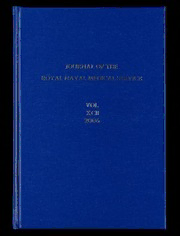
JRNMS VOL 92

DTIC ADA484724: Utilizing the Common Criteria for Advanced Student Research Projects

Eczema Free in 30 Days
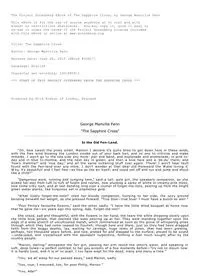
The Sapphire Cross by George Manville Fenn
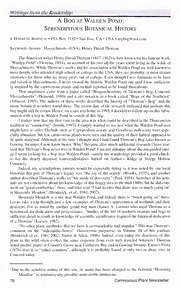
A Bog at Walden Pond: Serendipitous Botanical History
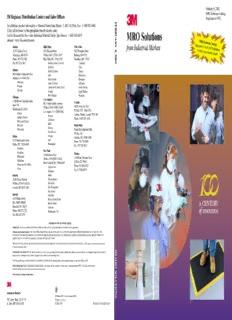
(Calls will be routed to the appropriate branch via area
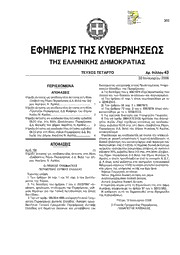
Greek Government Gazette: Part 4, 2006 no. 43

FS orario 2006 1

Calendario 1er fin de semana de noviembre
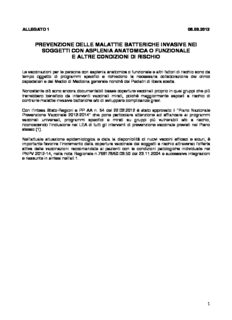
Calendario Vaccinale e Categorie a Rischio 2012
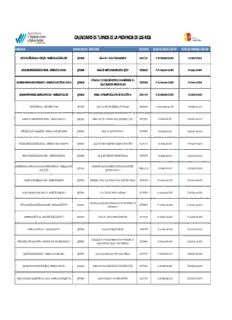
calendario de turnos de la provincia de los rios
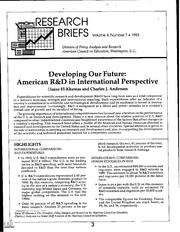
ERIC ED382085: Developing Our Future: American R&D in International Perspective.



